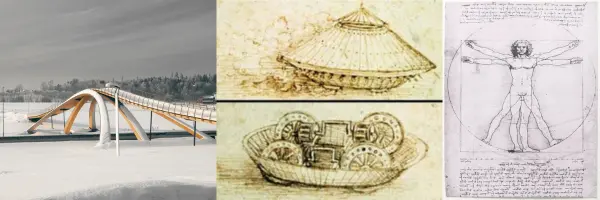
Leonardo da Vinci, a true Renaissance genius, left a lasting mark on the world through his art and innovative ideas. Many of his inventions, sketched out hundreds of years ago, continue to have a profound impact on modern life.
His designs, such as the ball bearing and the continuous variable transmission (CVT), are crucial in various modern machines.
Although prototypes were unavailable during da Vinci’s lifetime, today’s engineers have brought several of his concepts to life.
For instance, the idea of a double-hulled ship showcased his understanding of improved buoyancy and stability, which is evident in today’s maritime engineering.
Some of Leonardo’s ideas had to be reinvented, as most of his notes remained hidden for centuries, temporarily lost to history.
Leonardo’s visionary sketches included early concepts for flight and innovative machinery. His work demonstrates the timelessness of his ideas, which resonate with today’s advancements.
Leonardo da Vinci’s Impact on Modern Technology
Leonardo da Vinci’s influence on today’s technology is profound. His designs laid the groundwork for modern advancements, especially in engineering and automation.
Foundations of da Vinci’s Innovations
Leonardo da Vinci was not only an artist but also a visionary engineer. His notebooks contained sketches and ideas that were ahead of his time.
Among these was the concept of the ball bearing, a crucial component that reduces friction in machines. This innovation is still utilized in various industries, including automotive and aerospace.
Another of his notable drawings depicted a flying machine inspired by the anatomy of birds. This drawing provided insights into aerodynamics and influenced the development of aviation technology.
Concept of Automation and Robotics
Leonardo also explored the concept of automation, a precursor to modern robotics.
He envisioned mechanical devices that could operate without human intervention.
One example is his design of a mechanical knight, a humanoid automation capable of rudimentary movements.
This early concept reflected his understanding of mechanical systems, which inspired engineers to explore the field of robotics.
By imagining such devices, Leonardo da Vinci paved the way for today’s advanced robotics, in which machines perform tasks autonomously in the manufacturing and medical fields.
His vision demonstrated the potential of machines to extend human capabilities, an idea that continues to drive technological progress.
Military Engineering
Leonardo da Vinci’s work in military engineering was revolutionary. He designed innovations that increased the effectiveness of warfare technology.
These designs include concepts for armored vehicles, early designs for a type of machine gun, and the formidable giant crossbow.
Armored Vehicle Concepts
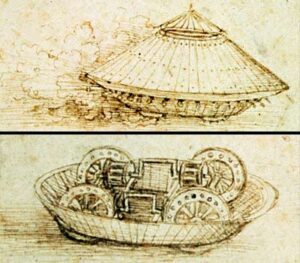
Leonardo imagined an early form of a tank, a vehicle that could move on the battlefield while protecting its passengers.
This design featured a wooden shell reinforced with metal plates. Armed with light cannons and operated by a crew, it was designed to move in all directions using a series of rotating gears.
Though never built in his time, the concept was groundbreaking and influenced future armored vehicle designs.
Machine Gun Precursor
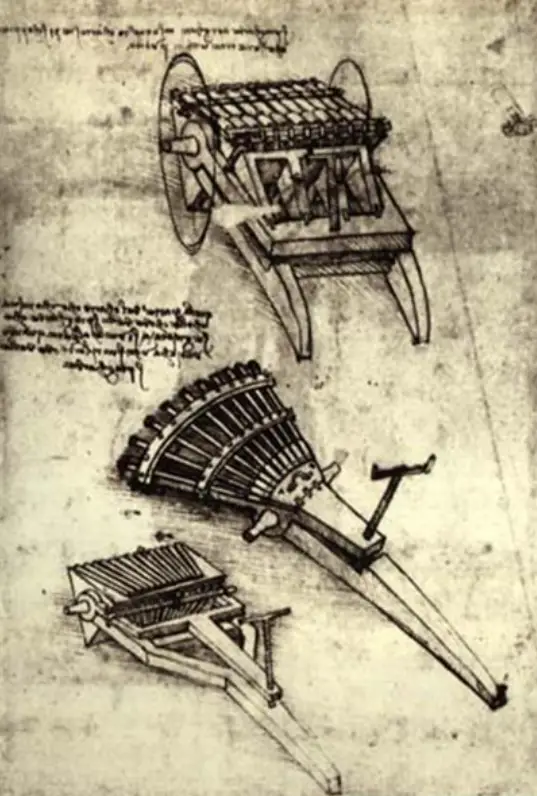
Da Vinci also envisioned an early version of a machine gun.
This design consisted of a large, multi-barreled gun mounted on a rotating platform.
It allowed operators to fire rapidly, offering a substantial advantage in firepower.
Known as the “33-barrel organ,” this device resembled a pipe organ.
Although not fully realized in his lifetime, elements of this design informed future advancements in automatic weaponry.
Giant Crossbow Design
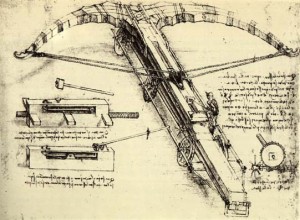
His giant crossbow design reflected both ingenuity and scale.
The crossbow was enormous, designed to be intimidating, and capable of launching large projectiles.
It was constructed from wood with a bow that spanned 27 yards. The aim was to create a psychological impact on the battlefield alongside its practical uses.
These designs highlight Leonardo’s contributions to advancing military technology, even if not all of them were practical for use during his lifetime. His ideas have inspired and shaped modern engineering and warfare.
Aeronautics and Flight
Leonardo da Vinci made significant strides in early aviation concepts. His designs laid the groundwork for modern aeronautics, which include the Ornithopter and Helical Air Screw, along with innovations in parachute technology. These inventions reflect his deep interest in human flight and innovative thinking in designing the first flying machines.
Ornithopter and Helical Air Screw
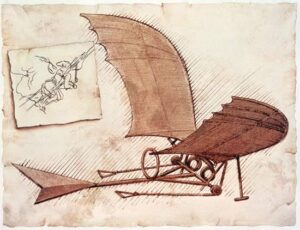
Leonardo’s concept of the Ornithopter was designed to mimic the flapping of bird wings. This invention demonstrated his fascination with natural flight.
While it was never built in his time, the design included mechanisms for wing movement powered by human effort. Although it didn’t directly lead to powered flight, it influenced future designs by exploring the principles of lift and thrust.
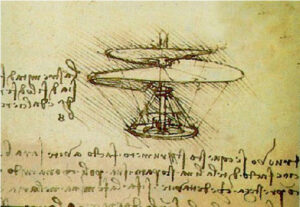
The Helical Air Screw can be seen as a precursor to the modern helicopter.
This design featured a screw-like structure designed to lift off the ground through rotational movement.
Leonardo’s sketches showed a device constructed of reed, linen, and wire. Though not feasible during his era due to material limitations, the helical concept provided insights into vertical flight mechanics.
Parachute Innovations

Leonardo’s parachute design was groundbreaking in its simplicity and foresight.
He envisioned a linen pyramid-shaped parachute sealed with a wooden frame. The parachute aimed to allow people to descend safely from heights.
This design was practically tested centuries later and found viable, validating his concepts.
His innovative thoughts on controlled descent laid the foundation for modern parachute systems, demonstrating his understanding of aerodynamics and the potential for human flight.
Hydraulic Engineering
Leonardo da Vinci’s studies in hydraulic engineering show his innovative thinking. His work designing canal locks and double hulls for ships influenced modern engineering and naval architecture.
Canal Lock Design

Leonardo designed a canal lock system that helped control water flow, making the transportation of goods through waterways more efficient.
Locks are structures that allow vessels to move between different waterway levels. His design featured a system of gates and water channels controlling water levels, enabling boats to be raised or lowered safely and efficiently.

This design enhanced trade routes, making canal travel smoother and more reliable.
Double Hull for Ships
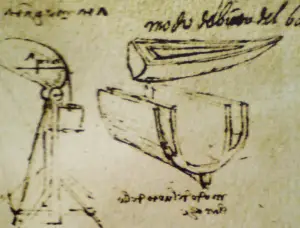
Leonardo also developed the concept of a double hull for ships.
A double hull involves two layers of watertight hull surfaces. This design enhances a ship’s safety and buoyancy by providing an additional layer to prevent water ingress in the event that the outer hull is breached.
This innovation has been crucial in modern shipbuilding, where it is used to prevent environmental disasters such as oil spills.
Anatomical Studies and Medicine
Leonardo da Vinci’s work in anatomy laid the foundation for a significant contribution to modern medicine. His detailed studies of human anatomy improved accuracy and understanding, influencing artists and scientists alike.
Furthermore, his exploration of body proportions has provided a basis for future anatomical models and medical illustrations.
Human Anatomy Accuracy
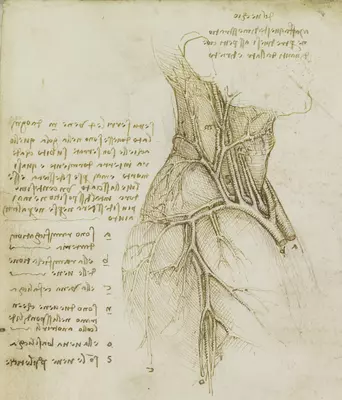
Leonardo da Vinci’s anatomical studies were groundbreaking in their precision.
He meticulously dissected human bodies, documenting muscles, bones, and organs in unmatched detail. His drawings provided crucial insights into the medical field.
Leonardo’s commitment to capturing the intricacies of the human body showcased a depth of observation rarely seen in his era. His approach to understanding the human form significantly influenced art and contributed to the development of early medical education.
His anatomical drawings illustrate how bones and muscles function, influencing medical and artistic communities. These illustrations continued to offer valuable references to medical art long after his time. They established a blueprint for future anatomical studies.
Leonardo’s ability to combine art with science remains a valuable legacy. His work is linked to advancements in contemporary medical understanding. Although his sketches were not widely recognized during his lifetime, they paved the way for modern medical illustration techniques.
Study of Body Proportions

Leonardo’s study of body proportions went beyond mere artistry.
He sought to understand the mathematical relationships within the human body. His “Vitruvian Man” drawing famously captured this exploration, symbolizing the blend of art and science that defined his work.
By studying human proportions, Leonardo aimed to achieve harmony in his art. His research on proportions also contributed to the development of accurate anatomical representations, which benefited medical illustrations and artistic endeavors.
His analysis of body symmetry and balance informed future artists and anatomists about human structure, providing a standard that is referenced even today.
Leonardo’s meticulous notes and sketches demonstrate his dedication to capturing the essence of human anatomy, which has influenced current medical practices and artistic illustrations.
Understanding these proportions provided a foundation for his artistic pursuits and contributed to the medical community’s comprehension of human anatomy. Leonardo’s work became a cornerstone for linking artistic and scientific studies of the human body.
Civil Engineering
Leonardo da Vinci’s work in civil engineering was revolutionary, showcasing influential ideas. His concepts in bridge design, city planning, and the development of measuring devices, such as the odometer and anemometer, provide insight into his genius. Each of these elements illustrates his forward-thinking approach and technical skills.
Self-Supporting Bridge
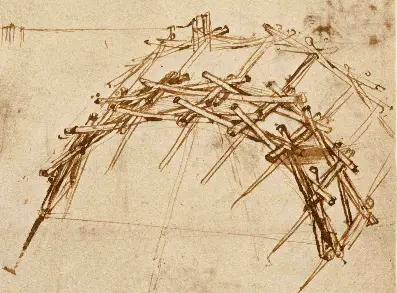
Leonardo designed a self-supporting bridge that did not require nails or ropes. It relied on the principles of balance and gravity.
The bridge could be easily assembled and disassembled, which made it a practical solution for military campaigns and temporary crossings.
Notably, the design was simple yet effective. It consisted of a series of interlocking beams, which provided strength and durability, demonstrating Leonardo’s deep understanding of engineering principles.
Today, the self-supporting bridge concept is still admired for its innovative approach. Its ability to support weight with minimal resources showcases Leonardo’s mastery of structural integrity.
City Planning Principles

Leonardo’s vision for city planning was focused on both functionality and aesthetics. He proposed designs that separated pedestrian and vehicle traffic, enhancing safety and efficiency. His ideas included wide streets, systematic road layouts, and integrated waterways for transportation.
These principles aimed to improve urban life by reducing congestion and pollution.
His plans also included green spaces and efficient waste disposal systems. These concepts are evident in modern urban planning, reflecting Leonardo’s foresight in creating healthy, sustainable cities.
The Odometer
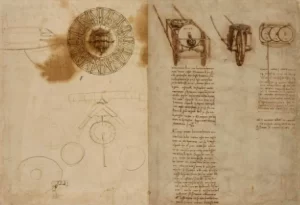
Leonardo’s odometer was an incredible tool for measuring distances during travel. This device worked through a geared mechanism, with each wheel turn translating into distance on a dial. It allowed travelers to accurately calculate the length of their journey, which was especially useful for cartographers and engineers.
The odometer offered precision at a time when such metrics were challenging to obtain.
Modern odometers owe much to his original design, showcasing his foundational and lasting contributions to measuring distance effectively during travel.
The Anemometer
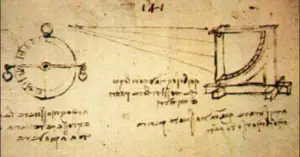
Leonardo’s creation of the anemometer was a pioneering development in weather measurement. This instrument measures wind speed, a crucial factor for various applications, including navigation and meteorology.
Leonardo’s design employed a pendulum system to measure the wind’s force, providing insights into weather conditions.
His anemometer highlighted the importance of understanding atmospheric conditions in planning and navigation. Modern counterparts continue to utilize his innovative concepts to monitor and predict weather patterns, underscoring Leonardo’s enduring impact.
Mechanical Inventions
Leonardo da Vinci’s mechanical inventions have left a lasting impact on modern engineering and technology. His creative designs include mechanisms used in everyday machinery and complex systems.
Ball Bearing Mechanism
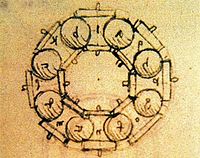
Leonardo’s ball bearing mechanism reduces friction in rotating parts, a principle still used in many machines today. This invention is crucial in industries such as automotive and aerospace.
Placing spherical bearings in a housing allows moving parts to operate more smoothly and efficiently.
The ball bearing design serves as a foundation for numerous devices, ranging from bicycles to advanced machinery, underscoring its essential role in modern engineering.
Mirror Grinding Machine
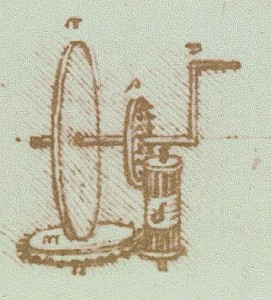
Leonardo designed a mirror grinding machine to polish curved lenses. This invention was necessary for the development of telescopes and optical lenses.
The machine used a grinding wheel to smooth the mirror’s surface, allowing for more precise light focusing.
Enabling the creation of finely polished lenses played a pivotal role in advancements in science and astronomy. His detailed sketches showed remarkable foresight into the needs of future scientific endeavors.
Spring-Driven Mechanism
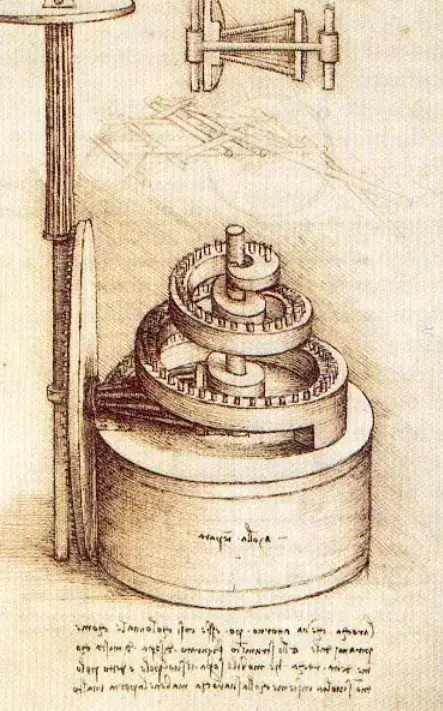
Leonardo’s introduction of the spring-driven mechanism demonstrated how stored energy could be harnessed to power devices. This concept was pioneering in the development of clocks and other timekeeping devices.
His designs featured coiled springs that, when released, would drive gears and subsequently move mechanical parts.
The idea of using a consistent and reliable power source was revolutionary. It influenced the creation of more sophisticated machinery, demonstrating Leonardo’s profound understanding of mechanical energy.
Robots
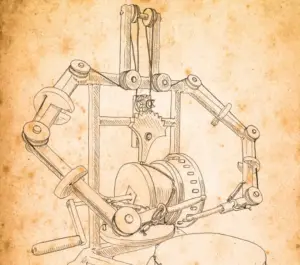
Leonardo da Vinci’s sketches of robots, often referred to as his “mechanical knight,” exemplify his visionary approach to blending art and engineering during the Renaissance.
These intricate designs, which include detailed plans for a humanoid automaton capable of mimicking human movements, highlight da Vinci’s profound understanding of mechanics and anatomy.
His pioneering work laid the foundational concepts for modern robotics, reflecting his timeless genius and enduring influence on technological innovation.
The Continuously Variable Transmission
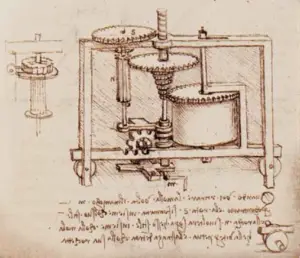
Leonardo’s design for the continuously variable transmission (CVT) was the first of its kind. Nothing similar would be seen until Daimler and Benz filed a patent for it in 1886. However, he can be considered the original inventor of this machine.
Visual Arts and Optics
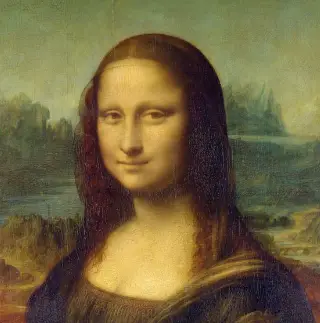
Leonardo da Vinci’s influence on the visual arts and optics is profound. His techniques in painting and understanding of light and shadow continue to shape artistic practices today.
Chiaroscuro and Sfumato Techniques
Leonardo da Vinci’s mastery of chiaroscuro and sfumato techniques brought a revolutionary depth to the visual arts.
Chiaroscuro refers to strong contrasts between light and dark areas in painting, which creates a sense of volume and three-dimensionality. This technique allows artists to effectively delineate forms and spaces, adding realism to their work.
On the other hand, Leonardo developed Sfumato, a technique in which boundaries between colors are blurred, producing a soft transition without harsh lines.
It gives paintings a more lifelike appearance, enhancing the subtlety of skin tones.
Both techniques are evident in famous artworks, such as the Mona Lisa, which have influenced countless artists across generations.
These techniques emphasize the interplay of light and shadow, creating evocative and realistic images that remain impactful in modern art education and practice.
Scientific Method and Naturalism
Leonardo da Vinci was ahead of his time, using empirical methods and was committed to detailed observation. His approach laid the groundwork for modern scientific methods and influenced the development of naturalism in both art and science.
Empirical Observation Approach
Leonardo da Vinci’s method of scientific study focused on systematic observation. Unlike many of his contemporaries, he emphasized the importance of observing nature firsthand.
He carried out his studies through meticulous examination rather than relying on traditional theories.
This method involved repeatedly observing phenomena and noting details, a precursor to the scientific method used today.
His approach was visual, prioritizing sketches and drawings to represent his observations. Through these, he explored subjects such as fluid dynamics and human anatomy.
Leonardo’s empirical approach was revolutionary. It aligned more with modern scientific practices than with the speculative methods standard in his era.
Detailed Documentation Practices
Leonardo’s attention to detail was evident in his documentation practices.
He maintained extensive journals filled with sketches, notes, and observations.
This level of detail ensured that others could understand and scrutinize his observations, even across centuries.
Recorded in mirror writing, his notebooks covered various topics, from anatomy to engineering.
His emphasis on detail and accuracy was crucial in establishing standards for scientific documentation.
Although many of his inventions were not built during his lifetime, the thoroughness of his notes allowed them to be appreciated much later.
His practices highlighted the significance of preserving scientific knowledge meticulously for future generations.
Frequently Asked Questions
Leonardo da Vinci’s inventive mind gave rise to numerous creations that continue to impact today’s world. His work spans various fields, including art, science, and engineering, showcasing his diverse talents.
What did Leonardo da Vinci actually invent?
Leonardo da Vinci is credited with inventions like the parachute, an early version of a helicopter, and the armored vehicle. His innovative sketches and models often contained ideas that were far ahead of their time.
What are Leonardo da Vinci’s main inventions?
Da Vinci’s key inventions include the flying machine, diving suit, and early robot design. Many of his concepts laid the groundwork for modern technologies.
Did da Vinci invent the blender?
No, Leonardo da Vinci did not invent the blender. This kitchen appliance was developed long after his time.
Did Leonardo invent the helicopter?
Leonardo da Vinci conceptualized a device called the “aerial screw,” an early idea resembling a helicopter. While it was never built, it’s considered a precursor to the modern helicopter.
How much is the Mona Lisa worth?
The Mona Lisa, painted by Leonardo da Vinci, is considered priceless and has vast cultural and historical significance.
Who painted the Last Supper?
Leonardo da Vinci painted The Last Supper, an iconic mural in Milan’s Convent of Santa Maria delle Grazie.
Why is the Mona Lisa so famous?
The Mona Lisa is renowned for its captivating use of sfumato, a pioneering technique used by da Vinci. Its mysterious expression and historical thefts have further enhanced its fame.
Did Leonardo da Vinci invent weapons?
Leonardo da Vinci designed various weapons, including an early tank and a multiple-barrel gun. His inventive plans aimed to revolutionize the art of warfare.
Where is the Mona Lisa?
The Mona Lisa is housed in the Louvre Museum in Paris. It attracts millions of visitors each year.
What caused Leonardo da Vinci’s death?
Leonardo da Vinci died from what is believed to be a stroke at the age of 67. He passed away in Amboise, France, in 1519.
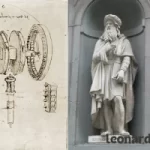

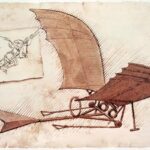
 Leonardo Bianchi,
the creator of Leonardo da Vinci's Inventions.
Thank you for visiting
Leonardo Bianchi,
the creator of Leonardo da Vinci's Inventions.
Thank you for visiting